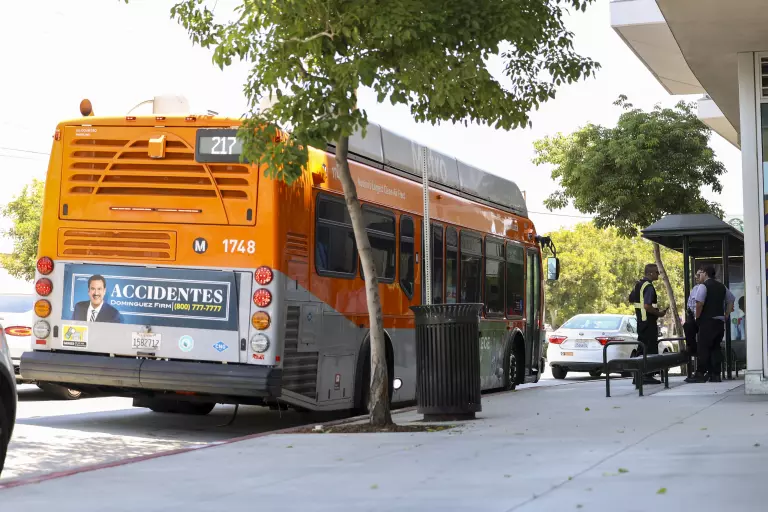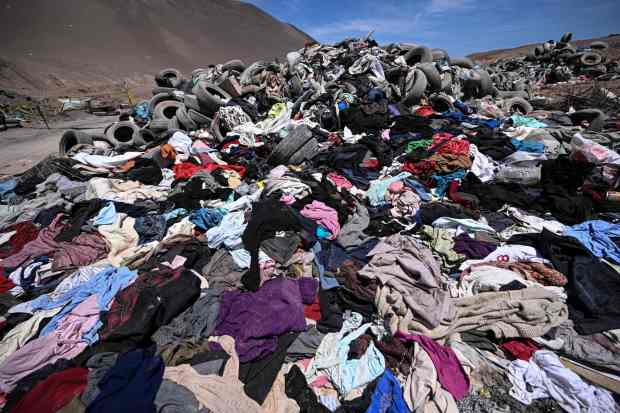Under California law, anyone caught diverting water in violation of a state order has long been subject to only minimal fines. State legislators have now decided to crack down on violators under a newly approved bill that sharply increases penalties.
Assembly Bill 460 was passed by the Legislature last week and is among the water-related measures awaiting Gov. Gavin Newsom’s signature. Other bills that were approved aim to protect the state’s wetlands and add new safeguards for the water supplies of rural communities.
Supporters say increasing fines for violations will help the State Water Resources Control Board more effectively enforce its orders to curtail water use when necessary.
“It helps the water board enforce the laws that they have on the books,” said Analise Rivero, associate director of policy for the group California Trout, which co-sponsored the bill.
The bill, which was introduced by Assemblymember Rebecca Bauer-Kahan (D-Orinda), is intended to prevent the sort of violations that occurred in 2022 in the Shasta River watershed, when farmers and ranchers who belong to the Shasta River Water Assn. defied a curtailment order for eight days and diverted more than half the river’s flow, flouting requirements aimed at protecting salmon.
Aggressive and impactful reporting on climate change, the environment, health and science.
The state water board fined the association the maximum amount for the violation: $4,000, which worked out to about $50 for each of its members. Those small fines didn’t deter farmers and ranchers from reducing the river’s flow to a point that threatened salmon and affected the supplies of downstream water users.
The case in Siskiyou County led to widespread calls for larger fines and stronger enforcement powers.
The legislation increases fines for violations of state water curtailment to as much as $10,000 per day, plus $2,500 for each acre-foot of water diverted. (An acre-foot is 325,851 gallons, or enough to cover one acre a foot deep.)
“This bill closes that loophole and makes the existing law stronger, and it’s an important step in disincentivizing water theft,” Rivero said.
Rivero said being able to impose larger fines is important as California grapples with the effects of climate change on water supplies.
Leaders of a coalition of environmental groups urged Newsom to sign the bill. In a letter, they said enforcing harsher penalties for violators is crucial for the state water board to “fulfill its mission of protecting fish, water, and people.”
Bauer-Kahan said that for too long, breaking the law and paying the fines have been seen as the cost of doing business by some illegal water diverters.
“Although we did not go far enough in ensuring that our water rights system functions in times of scarcity, we did take an important step,” Bauer-Kahan said.
The legislation raises penalties to “better hold those who steal water accountable,” she said. “Water is a precious resource, and we must do everything possible to ensure its protection.”
Proponents of the bill made some sacrifices to secure sufficient support in the Legislature, dropping a provision that would have given the state water board authority to act faster in emergencies to prevent “irreparable injury” to streams, fish or other water users.
The result was a relatively modest reform, but one that serves an important purpose, said Cody Phillips, staff attorney for the group California Coastkeeper Alliance.
“Being able to get the California Legislature to agree to increase fines in water is a major deal for the practical consequences of preventing water theft, but also to show that we can change these important details about our water rights system, and the sky doesn’t fall,” Phillips said.
Other proposals have recently encountered strong opposition from agricultural groups and water agencies.
Phillips and other environmental advocates supported another bill, AB 1337, which sought to clarify the state water board’s authority to issue curtailment orders for all diverters, including senior rights holders that use a large portion of the state’s water. But that bill didn’t secure enough support to pass this year in the Senate Natural Resources and Water Committee.
“Water is often referred to as the third rail in California politics, and we’ve seen that any changes, even modest changes, like 460 and frankly 1337, are met with ferocious pushback,” Phillips said. “But we can’t avoid these issues — climate change, overallocation, they’ve all led to a system where the way that we deal with water just doesn’t work.”
Some legal experts said the bill is a step in the right direction.
“We know that water is the single most important resource in the state, and yet we do not have a clear understanding of who uses it, where, and when, and we do not have a robust system for correcting unlawful use,” said Jennifer Harder, a professor at University of the Pacific’s McGeorge School of Law.
Harder said the state needs to continue improving collection of water use data and should adopt measures to improve oversight of water rights. She said she is optimistic that “local water suppliers will come to understand that state-level standards can support and enhance local management.”
One of the other water-related measures passed by the Legislature included a bill intended to protect California’s wetlands after the rollback of federal protections under a Supreme Court decision last year. The court’s ruling in Sackett vs. EPA rewrote the federal definition of wetlands and removed federal protections for many streams that do not flow year-round, leaving ephemeral streams vulnerable to development and pollution.
If signed by Newsom, the bill, AB 2875, will codify an executive order that then-Gov. Pete Wilson issued in 1993 establishing a state policy of “no net loss” of wetlands and calling for a long-term increase in the acreage of wetlands. Despite that policy, the state has continued to lose more wetland acres to development during the last three decades.
“We have wetlands that only flow certain times of year, and they are seasonal, ephemeral streams that were stripped of protections, and yet they are really, really important biologically and for habitat,” said Assemblymember Laura Friedman (D-Glendale), who introduced the legislation.
Wetlands and a riparian forest are sustained by groundwater at the National Audubon Society’s Kern River Preserve.
Friedman and other supporters of the measure have stressed that because more than 90% of California’s original wetlands have already been drained and destroyed, strong protections for those that remain are vital. They say since the Supreme Court has scaled back the Clean Water Act’s federal protections for wetlands, the state will need to play a bigger role.
“We care about our state’s natural resources here in California, and it’s a shame that we right now have a Supreme Court that doesn’t seem to be very concerned about the kind of destruction that we’re seeing to our environment,” Friedman said. “It falls on states to really play whack-a-mole and catch up, because we have relied for a long time on existing, long-standing federal regulations.”
Scientists have documented major declines in North American bird populations since the 1970s, and they cite causes including the loss of habitats and warmer, drier conditions driven by climate change, among other factors.
The bill was sponsored by leaders of Audubon California, who called the measure an important step toward protecting wetland habitats that birds need to survive.
The bill doesn’t create a new regulatory framework but does make “a strong statement that California will protect and add wetlands,” said Mike Lynes, Audubon California’s director of public policy. “We’ve already lost so much of our natural wetland habitat. We’ve seen a decline in biodiversity, and there’s a ton of benefits by creating wetlands, not only for ecosystems, but also for flood control and for recreational opportunities, whether it’s birding, hunting, just hiking out in wetland areas.”
Another bill that was approved, AB 828, is aimed at improving safeguards for managed wetlands that are sustained by groundwater pumping, as well as rural communities that depend on wells. The bill, introduced by Assemblymember Damon Connolly (D-San Rafael), would allow these managed wetlands and small communities to temporarily continue to pump amounts of water in line with historical averages without facing mandatory reductions or fees imposed by local agencies under the state’s groundwater law.
Supporters said they proposed the change after several local agencies proposed groundwater allocations that would excessively limit supplies for communities or wildlife areas while also limiting pumping by agricultural landowners who are the largest water users.
“It sets a pause on pumping restrictions for small community water systems and managed wetlands, and on some fees, until those issues and their needs are considered,” Lynes said.
Some communities in the Central Valley have faced unworkable requirements to cut water use dramatically and start paying high fees for exceeding those limits, said Jennifer Clary, state director for the group Clean Water Action.
“We wanted a long-term exemption, but there was a lot of concern in the Legislature about that,” Clary said.

 Lawyer Paulin Silva shows clothes dumped in the desert, in La Pampa sector of Alto Hospicio, about 10 km east of the city of Iquique, Chile, on November 11, 2022. – Hills of clothes from the United States, Asia and Europe; used cars from Japan or Korea and thousands of tires contaminate extensive areas of the immense but vulnerable Atacama desert in northern Chile, which has become the planet’s “backyard”. (Photo by MARTIN BERNETTI/AFP via Getty Images)
Lawyer Paulin Silva shows clothes dumped in the desert, in La Pampa sector of Alto Hospicio, about 10 km east of the city of Iquique, Chile, on November 11, 2022. – Hills of clothes from the United States, Asia and Europe; used cars from Japan or Korea and thousands of tires contaminate extensive areas of the immense but vulnerable Atacama desert in northern Chile, which has become the planet’s “backyard”. (Photo by MARTIN BERNETTI/AFP via Getty Images)

They had idiots like Kill Tony as guest speakers...